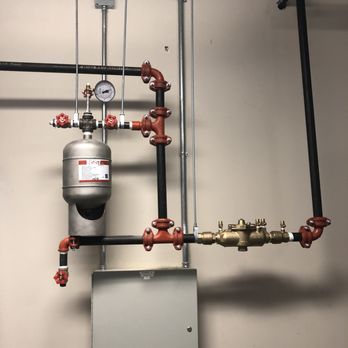Do I Need to Have a Backflow Test for My Water
Do I Need to Have a Backflow Test for My Water
Blog Article
The article below in relation to Commercial Backflow Testing is exceedingly attention-grabbing. Read it for yourself and figure out what you think about it.

Yes, you require to backflow test your residence's water system to make sure that the water is free of toxins as well as harmful degrees of chemicals. You need to not attempt to perform backflow screening on your own because of the devices required and room for error. We suggest that you call an expert plumber every couple of years to test your water.
What is Backflow?
Simply put, heartburn is when water moves upwards-- the opposite direction in the plumbing system. This is also known as "backpressure." When the water relocates this direction, it can blend with hazardous toxic substances and present a risk.
What Causes Backflow?
A common reason of backflow is a loss of water stress that causes the water to siphon back right into the water supply. After some time, there is a loss in water stress and the hose pipe starts to suck the water back right into the water supply. As you can think of, there are now chemicals from the paint that are getting in the water supply, possibly positioning a threat.
Heartburn Testing is Called For by Regulation in Certain Cities
Relying on where you live, you may really be required by law to backflow test your law. Iowa City maintains a record of all properties served by the city's water supply. The city requires that certain "high-hazard" facilities undertake backflow testing. In some cases, homes such as homes and apartment buildings are impacted.
You Can Prevent Backflow
If you have an expert plumber mount a backflow tool, hazardous backflow is conveniently avoidable. The plumber will certainly additionally check for heartburn and figure out if there is an active risk. The primary function of a backflow tool is to avoid water from streaming backward right into your water system. Plumbing technicians install the tool on the pipes in your home to ensure that the water just flows in the right direction.
Heartburn Can Influence Both You and Your City
Because harmful heartburn can impact the public water supply in addition to a single building, numerous cities establish heartburn standards. Luckily, modern cities have backflow devices in position that shield the water system that comes from many residences and also business residential or commercial properties. The actual risk originates from irrigation systems, which can damage the water supply with hazardous plant foods, manure, and various other chemicals.
Call a Plumber to Test for Backflow Before It is Far too late
A plumbing firm can promptly check your home's water to figure out if there are any hazardous chemical levels. As well as if you do uncover that your water has high degrees of toxins, a plumber can quickly mount a heartburn prevention gadget.
Yes, you require to backflow test your home's water supply to make certain that the water is free of toxins and unsafe levels of chemicals. A typical cause of backflow is a loss of water pressure that causes the water to siphon back into the water supply. After some time, there is a loss in water stress and also the tube starts to draw the water back into the water supply. The main purpose of a heartburn device is to prevent water from moving in reverse into your water supply. Many cities develop backflow guidelines due to the fact that hazardous heartburn can affect the public water supply in enhancement to a single structure.
What is Backflow Testing
Backflow, the reversal of the normal flow within a water system, is a plumbing issue that should be addressed. Backflow repair can fix this problem which may result in pollution contamination within your water system. In simpler terms, backflow can result in contaminated water combining with clean water. This will have an effect of on the water that is used in your sinks and bathtubs.
This unwanted contamination is the reason why regular backflow testing is needed. Backflow testing, usually conducted yearly, involves a test port that is built into your device. A professional plumber/backflow technician will then attach a test kit to this port in order to determine if the device is working properly. If your system is outdoors, you do not even need to be present for this testing. Just be sure to leave the necessary backflow paperwork administered to you by your city or health department.
If thebackflow test determines that the device is not operating correctly, repairs must be made. To repair a backflow, the device has to be cleaned. In order to do so, the device has to be disassembled and cleaned out. Once cleaned of any contaminates it is reassembled and reinstalled. In some cases the backflow device may have to be replaced. This is due to the device being beyond repair. Backflow devices only have to be replaced when the device is cracked or has undergone exposure to extreme temperatures resulting in damage. Statistics show that 5% of devices tested will present a problem and have to be either repaired or replaced.
Your home can greatly benefit from backflow testing because it can solve a major plumbing problem. As homeowners, all you have to do is ensure that backflow testing is done annually and if a problem is present, have a professional fix it. No one wants their water system to transmit contaminated water into their home.
https://www.hullplumbinginc.com/blog/2012/december/what-is-backflow-testing/

As a serious person who reads on Backflow Assembly Testing, I thought sharing that excerpt was beneficial. Sharing is caring. Who knows, you will be doing someone a favor. Thanks for your time spent reading it.
Fast relief, just a call. Report this page